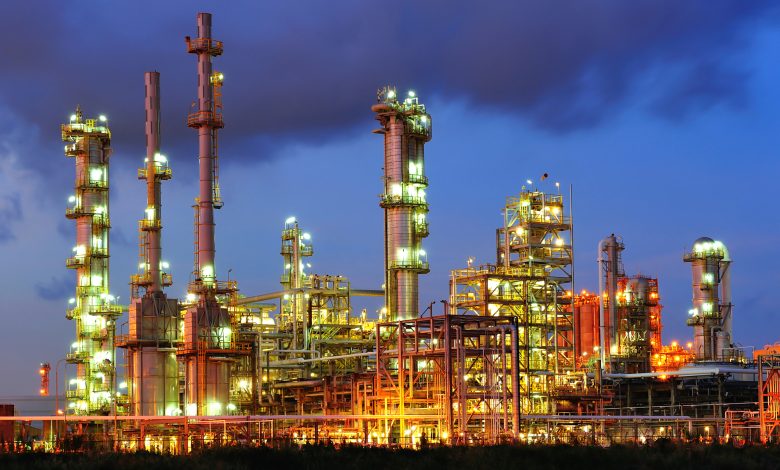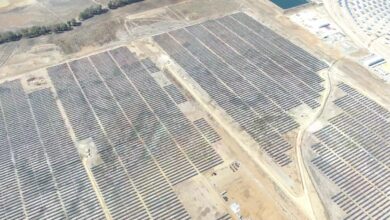$759 billion required for a net-zero petrochemicals sector by 2050
CCS and electrification will decarbonize the key chemicals used across industry
Petrochemicals could be made with almost no carbon emissions by investing an extra $759 billion by 2050, according to a new report from research firm BloombergNEF (BNEF). Electrification and carbon capture and storage are likely to play a central role in reducing emissions from the production of high-value chemicals, or HVCs, which are key feedstocks used to make plastics and many manufactured goods. HVCs are responsible for up to 2% of global emissions, equivalent to aviation, and double the aluminum industry’s contribution.
Governments and corporate net-zero commitments are pushing the petrochemicals industry to cut its emissions by 2050. Despite facing a more complex decarbonization path than any other sector, petrochemicals players’ net-zero targets cover more of the global manufacturing capacity than other heavy emitters like steel and cement. The report “Decarbonizing Petrochemicals: A Net Zero Pathway” outlines a pathway to low-emissions chemicals and describes how a combination of falling carbon capture and storage (CCS) and electrification costs could reduce emissions to net zero, even while total production grows significantly.
BNEF estimates that new clean capacity and retrofits for lower emissions will cost the petrochemicals industry an additional $759 billion compared to business-as-usual capacity growth. This is roughly 1% of the $172 trillion estimated by BNEF to be needed to decarbonize the global energy sector by 2050. Decarbonizing chemicals will be capex-intensive, but it is crucial for all new capacity and retrofits beyond 2030 to be net-zero, to avoid the risk of stranding assets over their long lifetimes.
By 2050, CCS could be the cheapest option for net-zero petrochemicals and abate the emissions of 40% of HVC production. Another 35% would rely on new electrified cracker designs, which could provide the only net-zero production route that is cost-competitive with conventional steam crackers. Bioplastics, which are the only commercially available net-zero route today would capture only 2.5% of the market by 2050, due to high costs and a lack of sustainable biomass.
The important role that CCUS is likely to play is a unique opportunity for integrated oil majors, which already have expertise in the technology and could accelerate cost declines. Oil companies have been exploring a greater footprint in the petrochemicals space as a hedge against declining fuel demand. If these companies shift the focus of their CCUS investments into downstream assets, they could lead the transition by expanding net-zero petrochemicals production and driving down costs for the entire sector.
The petrochemicals supply chain cannot decarbonize without the help of refiners. Currently, most of the world’s supply of aromatics, a key chemical ingredient in products like PET bottles, is sourced from refineries as a by-product of fuel production. In a net-zero scenario, refinery retirements start in 2030 as demand for transport fuels peaks and then begins to fall due to passenger car electrification. This leaves a gap in aromatics supply that can currently only be addressed by using green methanol feedstock – an expensive route that would triple the price of many chemicals. This process would account for 20% of chemicals production, up from 0% today, unless refiners make a dramatic pivot to focus on chemicals production while simultaneously decarbonizing their operations.

BNEF’s research shows low-carbon routes will remain more expensive than today’s production, despite some steep cost declines, in 2050. This could lead to persistent green premiums and create strong incentives to replace or reduce plastic and chemicals use in markets with net-zero mandates. Chemicals are crucial inputs to many industrial supply chains, so decarbonizing them could increase costs across several sectors. Unless cost declines are significantly accelerated, taxpayers will likely pay for long-term abatement either through higher prices or subsidies.
“Large-scale capex spending must start before the end of the decade if the petrochemical industry has any hope of reaching net-zero,” said Ilhan Savut, sustainable materials analyst at BNEF and lead author of the report. “Deploying these technologies will be expensive in the short term, but it could set the sector on a lower-cost decarbonization path. Given their long asset lifetimes, chemicals players must move quickly and fund net-zero projects as soon as possible, or risk getting locked out of key technologies. Investments today will be key to managing longer-term costs and pay dividends post-2035.”
If green plastics are burned at the end of their life, they are no longer net-zero. “While many net-zero targets do not cover Scope 3 emissions, customers and investors will link incinerated plastic to oil and chemicals companies, as they did with plastic waste. The whole supply chain is a plastic producer’s problem” said Julia Attwood, head of sustainable materials at BNEF. “A low-carbon petrochemical sector will require circular economy action. Producers are already working with refiners and waste managers to source circular and low-carbon feedstocks.”
While most net-zero capacity today is being driven by customer demand for sustainable plastics, policymakers can also kick-start decarbonization in petrochemicals. Carbon pricing is often touted as a decarbonization lever, but very high prices would be needed to incentivize change. At $250/tCO2, 80% of all net-zero HVCs production would be competitive with unabated production. Current prices in Europe sit at about $90/tCO2, and the prices seen by industrial emitters is actually much lower, thanks to generous free allowances. To incentivize quicker action, governments can provide longer-term subsidies to early adopters to justify higher production costs and invest in enabling infrastructure such as CO2 transport and storage networks and grids providing 24/7 clean power.






